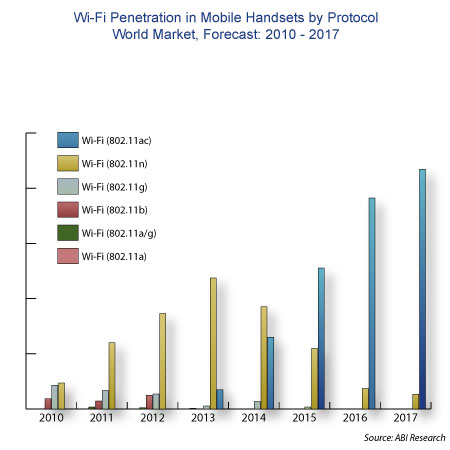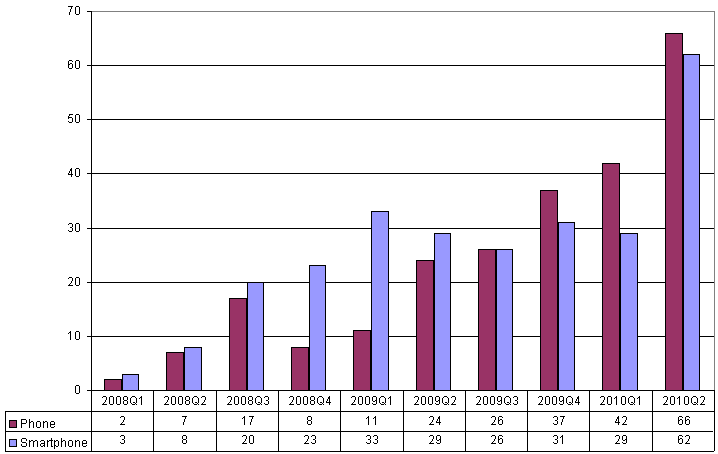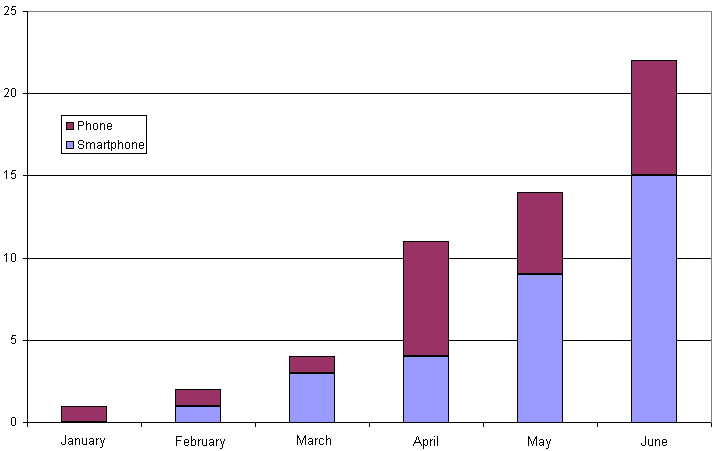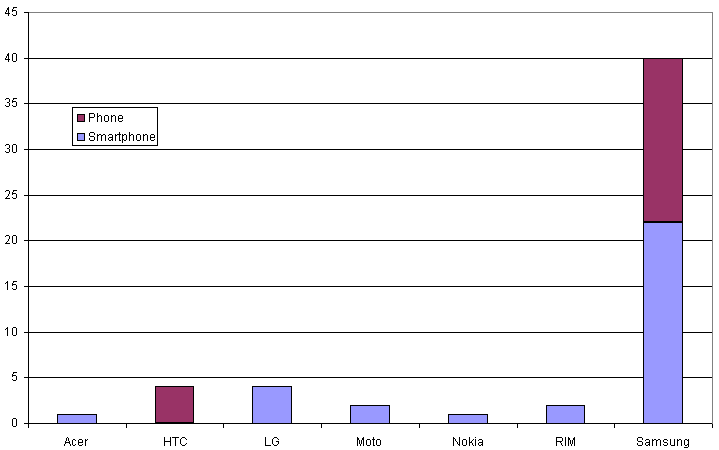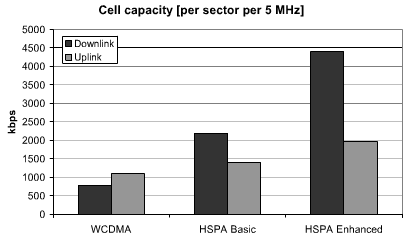Although phone numbers are an antiquated kind of thing, we are sufficiently beaten down by the machines that we think of it as natural to identify a person by a 10 digit number. Maybe the demise of the numeric phone keypad as big touch-screens take over will change matters on this front. But meanwhile, phone numbers are holding us back in important ways. Because phone numbers are bound to the PSTN, which doesn’t carry video calls, it is harder to make video calls than voice, because we don’t have people’s video addresses so handy.
This year, three new products attempted to address this issue in remarkably similar ways – clearly an idea whose time has come. The products are Apple’s FaceTime, Cisco’s IME and a startup product called Tango.
In all three of these products, you make a call to a regular phone number, which triggers a video session over the Internet. You only need the phone number – the Internet addressing is handled automatically. The two problems the automatic addressing has to handle are finding a candidate address, then verifying that it is the right one. Here’s how each of those three new products does the job:
1. FaceTime. When you first start FaceTime, it sends an SMS (text message) to an Apple server. The SMS contains sufficient information for the Apple server to reliably associate your phone number with the XMPP (push services) client running on your iPhone. With this authentication performed, anybody else who has your phone number in their address book on their iPhone or Mac can place a videophone call to you via FaceTime.
2. Cisco IME (Inter-Company Media Engine). The protocol used by IME to securely associate your phone number with your IP address is ViPR (Verification Involving PSTN Reachability), an open protocol specified in several IETF drafts co-authored by Jonathan Rosenberg who is now at Skype. ViPR can be embodied in a network box like IME, or in an endpoint like a phone of PC.
Here’s how it works: you make a phone call in the usual way. After you hang up, ViPR looks up the phone number you called to see if it is also ViPR-enabled. If it is, ViPR performs a secure mutual verification, by using proof-of-knowledge of the previous PSTN call as a shared secret. The next time you dial that phone number, ViPR makes the call through the Internet rather than through the phone network, so you can do wideband audio and video with no per-minute charge. A major difference between ViPR and FaceTime or Tango is that ViPR does not have a central registration server. The directory that ViPR looks up phone numbers in is stored in a distributed hash table (DHT). This is basically a distributed database with the contents stored across the network. Each ViPR participant contributes a little bit of storage to the network. The DHT itself defines an algorithm – called Chord – which describes how each node connects to other nodes, and how to look up information.
3. Tango, like FaceTime, has its own registration servers. The authentication on these works slightly differently. When you register with Tango, it looks in the address book on your iPhone for other registered Tango users, and displays them in your Tango address book. So if you already know somebody’s phone number, and that person is a registered Tango user, Tango lets you call them in video over the Internet.

